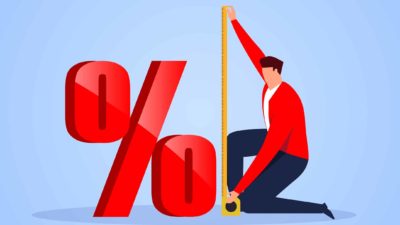There has been a lot of volatility this year. Is the ASX share market currently in a correction?
Firstly, let's talk about what a correction actually is.
What is an ASX share market correction?
A correction relates to the share market falling. For the ASX, this typically might refer to the S&P/ASX 200 Index (ASX: XJO) dropping in value.
A bear market – which isn't a market where people buy bears – is seen as a bigger and longer decline of the market than a correction.
Motley Fool Australia has a number of handy guides and investing definitions on our website. The difference between a correction and a bear market is defined as this:
A 'market correction' is like a bear market but less severe. The technical definition is about a 10% decline in share prices in less than two months.
The idea behind a correction is that because prices rose higher than they should have, falling prices serve the purpose of 'correcting' the situation.
One major difference between a bear market and a market correction is the extent to which prices fall. Bear markets occur when share prices drop by 20% or more, whereas corrections typically involve price drops of about 10%.
Furthermore, market corrections tend to last less than two months, whereas bear markets last two months or longer.
Has there been an ASX share market correction?
Between 4 January 2022 and today, the ASX 200 has fallen almost 5%.
However, between 4 January 2022 and 27 January 2022, there was a decline of approximately 10%. But since that bottom, the ASX 200 has risen 5.6%.
Whilst the ASX share market as a whole has recovered some of the lost ground in the correction, there are others that are still 'corrected'. A few remain more than 20% lower than the start of the year.
For example, the Xero Limited (ASX: XRO) share price is down around 30% since the start of 2022.
The Altium Limited (ASX: ALU) share price is down 23%.
The WiseTech Global Ltd (ASX: WTC) share price has fallen 24%.
Another example is the REA Group Limited (ASX: REA) share price being down 22%.
Why has volatility increased?
There has been a lot of talk about inflation and interest rates.
Interest rates can have a very important impact on asset values. As Warren Buffett once said at a Berkshire Hathaway annual general meeting:
The value of every business, the value of a farm, the value of an apartment house, the value of any economic asset, is 100% sensitive to interest rates because all you are doing in investing is transferring some money to somebody now in exchange for what you expect the stream of money to be, to come in over a period of time, and the higher interest rates are the less that present value is going to be. So every business by its nature … its intrinsic valuation is 100% sensitive to interest rates.
Rudi Filapek-Vandyck wrote on Livewire about what's happening to the ASX share market:
The change in inflation forecasts over the past five weeks has been nothing short of dramatic… markets are now considering the idea that the Federal Reserve might have waited too long, and will be forced to step on the monetary brakes through accelerated actions. It is this change in projections that is currently feeding into volatility and uncertainty in markets.
In Australia, the general shift is to pull forward the first RBA rate hike to November or August this year.
In the US, forecasts have literally gone into overdrive with all kinds of scenarios being considered, including starting the cycle with 50bp, hiking at every meeting this year, having rate hikes in between meetings, and continuing at full force throughout 2023.
Time will tell what happens next with the ASX share market.









